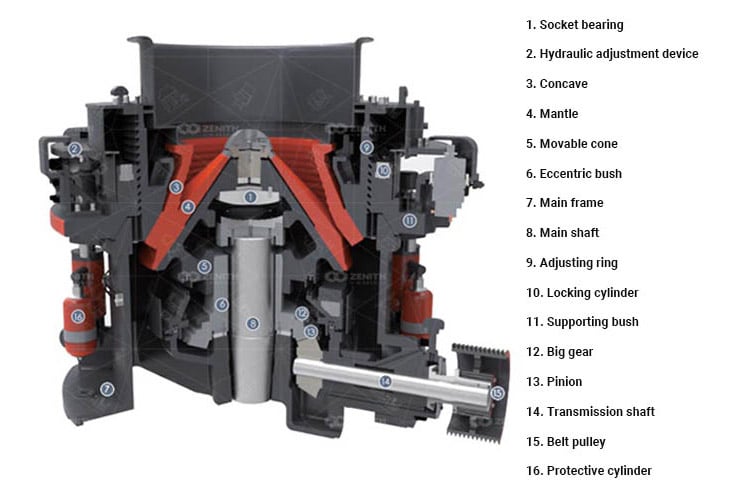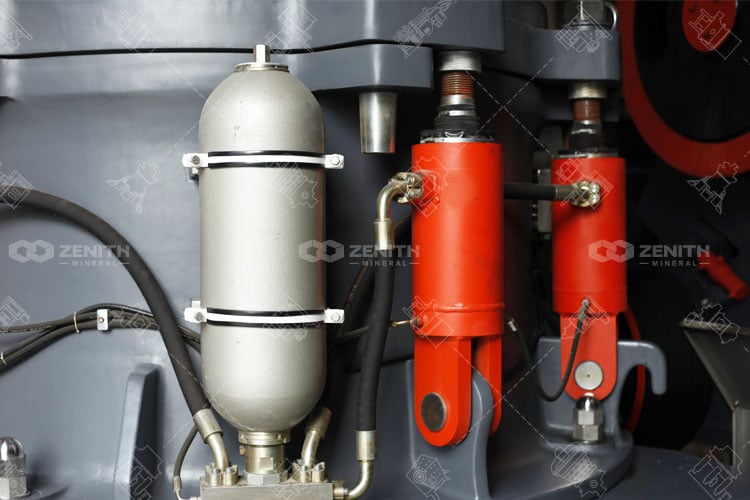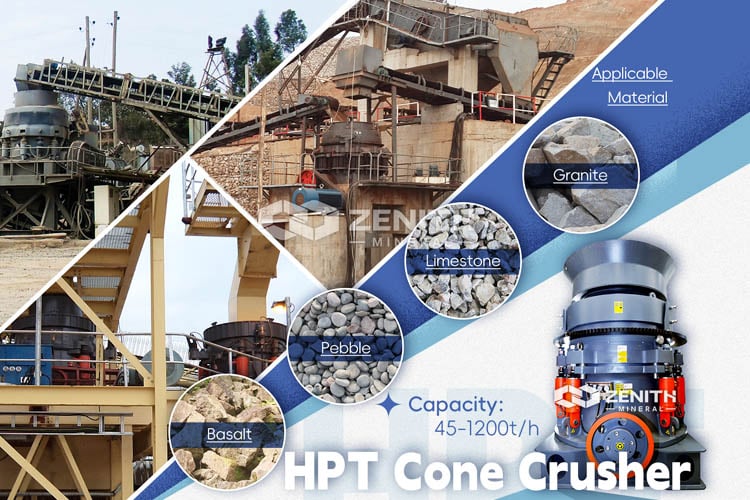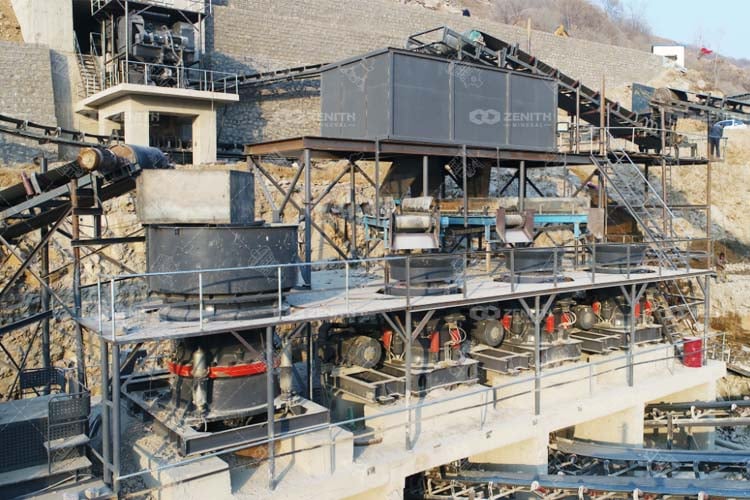Cone crusher is durable and highly efficient crushing machines appropriate for reductions over a variety of applications. Their design in which a mantle within a concave bowl rotates and traverses material at high speeds produces a cubical product required for various construction aggregates.
ZENITH is a leading manufacturer and innovator of crushing equipment, including the acclaimed hydraulic cone crusher. Our HPT cone crusher uses advanced automation and componentry for high-production applications. As a complete crushing solution, understanding key cone crusher parts aids operation and maintenance.
The main parts of a ZENITH HPT cone crusher include:

The robust mainframe forms the backbone of a cone crusher, providing structural integrity to house internal components under high load stresses. Its design distributes weight evenly across multiple feet or a track and chain assembly. The mainframe mounts to a solid base for non-vibrating operation. Mainframe bearings support the eccentric shaft and mantle, with tapered roller bearings common for cone crushers. They transmit torque smoothly while accommodating shaft expansions and withstanding radial forces during operation. Lubricated-for-life bearings suit harsh, remote applications and require minimal maintenance.
Read Also:Jaw Crusher VS Cone Crusher: 9 Key Differences
Rotating within the stationary bowl, the mantle is a consumable wearing part undergoing most material breakage. Composed of medium to alloy steel, it features an eccentric motion for traversing material under high pressure at 800-900 RPM. Specialty components resist wear through techniques like:
Mantle replacements avoid damage to internal components upon excess wear. CNC-machined precision ensures proper dynamics with the concave bowl surface.
Advanced cone crushers incorporate hydraulically-adjusted systems to control CSS settings without machine opening. Adjustment rings control the space between the mantle and bowl to regulate crushing cavity size depending on feed profile. Hydraulic cylinders powered by onboard units adjust ring positions remotely via buttons in operator cabs. Benefits include:

The concave inner surface of the stationary bowl regulates particle shapes by determining zones of compression. Deeper concavities yield more cubical-shaped product while shallower styles favor elongation. Hard surfacing using carbide tiles, tungsten or Ni-Hard alloys resists surface distress from irregularly shaped feed. Designs incorporate replaceable machined segments allowing profile renewals upon wear without full bowl replacements. Accurate profiles maintain crushing dynamics throughout component lives.
The main shaft acts as the crusher's powerhouse, rotating via a main pinion gear to oscillate the eccentric bush and movable cone. This heavy duty shaft must withstand tremendous torque loads transfer from the gear drive. Quality steel alloys and precision balancing are vital to preventing early failure from fatigue. The eccentric bush then converts the shaft's smooth rotation into an offset motion that causes the movable cone to gyrate in an orbit.
Powering the main shaft is a large drive pinion gear, mounted on the outer end of the shaft. This bevel gear meshes with a similarly sized ring gear, which is itself directly driven by the crusher engine or electric motor. Proper radial and axial alignment of the gear set is important to avoid complications like excessive noise or premature wear. Lube channels also supply oil to keep gears running smoothly under pressure. Together, the main shaft, gears and eccentric assembly constitute the heart of any cone crusher.
Scheduled component inspections and part replacements maximize uptime between overhauls:

Cone crushers can efficiently process a variety of mediums hard and abrasive materials including iron ore, limestone, non-ferrous metal ores, granite, and basalt.

The hydraulic cone crusher according to different performance is divided into single cylinder hydraulic cone crusher and multi cylinder hydraulic cone crusher.

Cone crusher is widely used in mine production due to its high crushing efficiency, low maintenance cost and large output capacity.
Fill your requirements here, and we'll send the custmized solution and quotation to you by the reserved contact information.